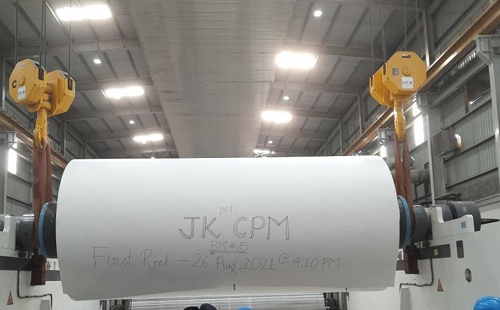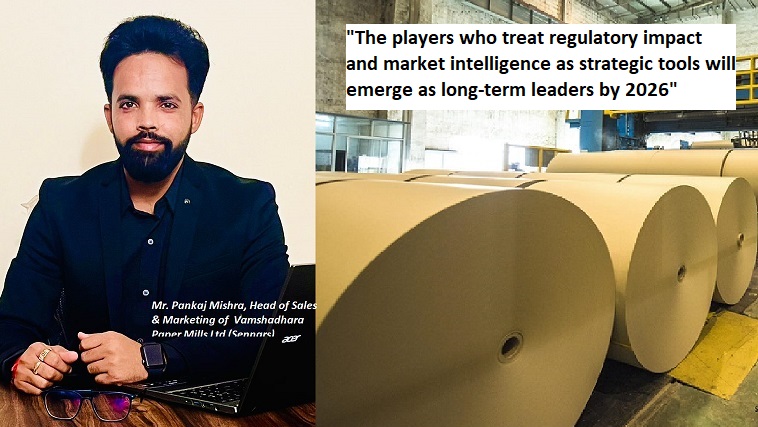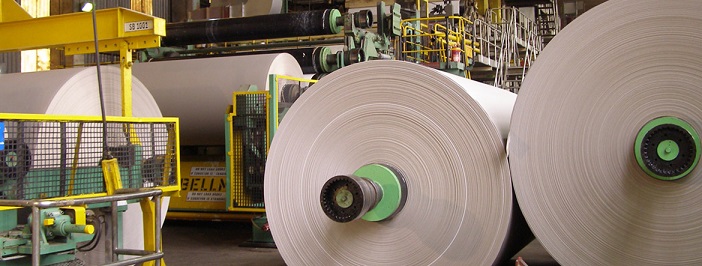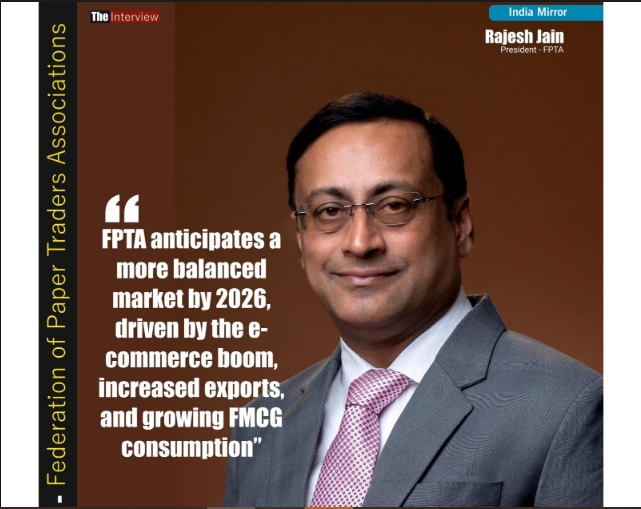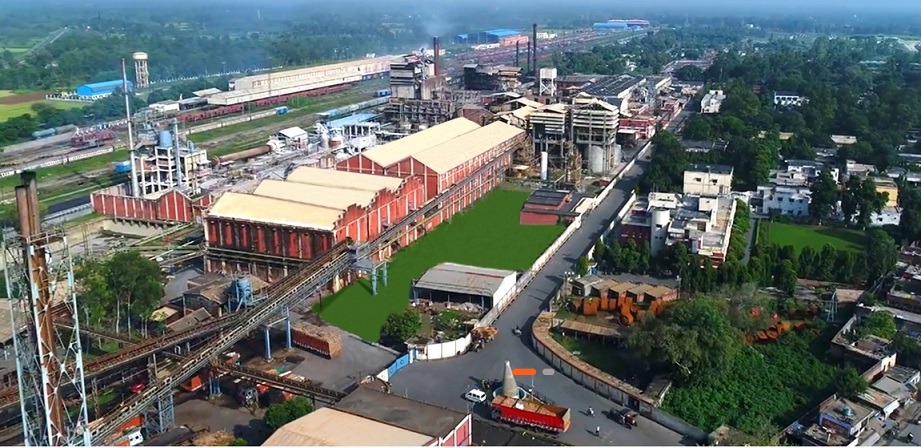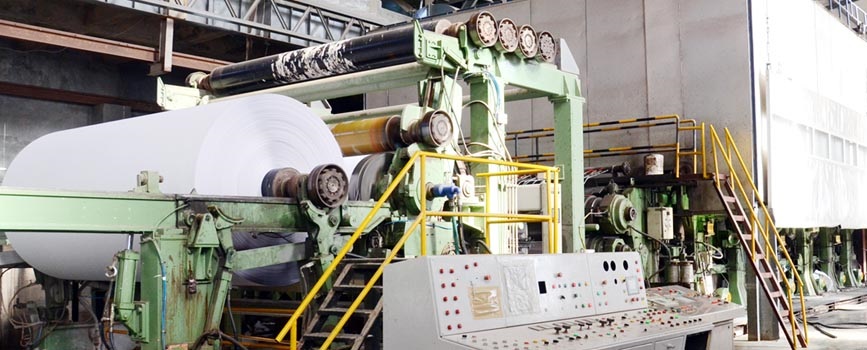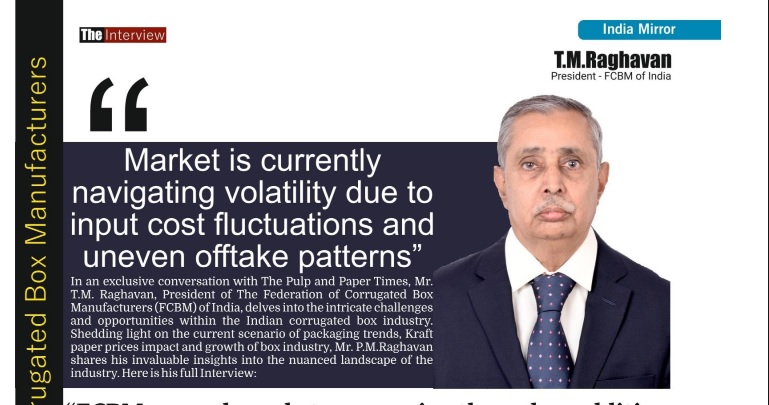IPPTA: Paper mills have to tweak a lot with products developments; ‘Value addition’ according to Customer behaviour
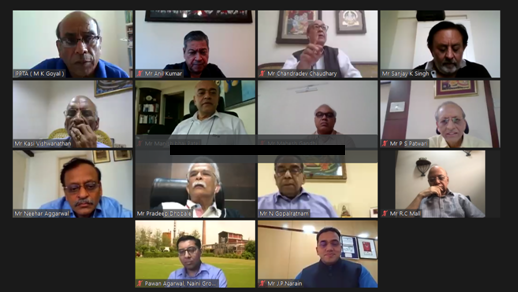

Paper mills have to tweak a lot with products developments; ‘Value addition’ according to Customer behaviour; FY 21-22 a win-win year for Paper Industry
New Delhi | 16th May 2020 | The Pulp and Paper Times:
The COVID 19 pandemic is giving a signal to the paper industry that time has come to incorporate some sort of changes in their production and marketing activities in order to survive. Paper mills have to understand market dimensions based on customer behaviour. The post-COVID-19 era will be belonging to technology and cost-effective products.
In a webinar organised by Indian Pulp and Paper Technical Association (IPPTA) on the subject ‘COVID 19 – Emerging opportunities, threat and path forward for paper mills’, Paper Industry leaders discussed the various challenges and opportunities emerging out of COVID 19 pandemic.
“Any disruptive change in the society is a 'catalyst' and is an agent of change; this change is bound to happen. Covid19 has become a 'catalyst' of change. I would not say that this is posing a threat, but it is challenging for all of us. This pandemic is challenging the social system, business practices and marketing practices and this is bound to happen. The most difficult thing today that we are not able to visualise what kind of changes likely to have in society. We need to see and understand collectively the forecast of the behaviour in society, trade and manufacturing, and then we need to adopt those changes. I hope, we will be far better and comfortable,†addressed by Mr. A.S. Mehta, President, JK Paper during the webinar.
Mr.Neehar Aggarwal, COO of BGPPL said during the IPPTA’s webinar that “The cost of imported coal has come down very drastically due to COVID 19 pandemic. It has been dropped by 55 per cent. So this is a useful opportunity for the paper mills to cut down the production cost. It is time to shift to imported coal rather than to auctioned domestic coalâ€,
“The Price of inputs like the furnace oil and derivatives have also been subdued as the government start getting deliveries at a low price. On the market pulp prices, the global demand for market pulp is 24 million tonnes out which China consumes 33 per cent. It is anticipated that in the shorter term pulp prices will remain quite subdued because the consumption has come down due to coronavirus,â€
Coal prices have been falling since the spike in commodity prices in September-October last year.

According to some media reports, the recent fall in global coal prices — Indonesian coal is down 14 per cent while South African coal has declined 21 per cent in the past six months — is driven by various external factors. The change in the investment sentiment in Japan to move away from coal projects, and the record increase in coal production in China and its plans to open new mines are impacting the demand for imported coal.
Raising the concern of opening up of the market, Mr. Anil Kumar, CEO and ED of Shreyans Industries Limited said to all panellist and attendees of the webinar that resuming the operation of paper mills is not a big issue as far as a concern to proper channelization of demand. Are we able to sell our paper? – NO, because most of the markets are shut, right from the wholesalers to retailer all are closed down.
Mr. Anil looks optimistic that “in coming 10 to 15 days things should move forward towards normalcy. We can hope that Industrial and commercial activity will resume with some restrictionsâ€
“There will be challenges for the next six months but opportunities are there especially for packaging grade paper after six months,†Mr. P.S. Patwari, Executive Director of Emami Paper expressed his assumption.
“There has been both positive & negative impact of COVID-19 on our industry. The emergence of digitalization has reduced the demand of writing and printing paper but on other hand E-commerce companies are generating good demand for packaging board,†said Mr. J.P. Narain, CEO of Century Pulp and Paper while addressing the panel.
Mr. Neehar further concludes that these are the tough time for the paper industry and we collectively have to focus on cost reduction, we need to look at product-wise contribution rather than production in volume. We need to look at our business beyond selling the paper, what value-added product we can add in our basket to get a maximum contribution. Basically what kind of paper we can make on the machine which can give us much more contribution.
Mr. Mehta motivates around 400 attendees of the webinar and says that we are most fortunate being in the paper industry which is going to least impacted. Other Industry, they are going to be far more impacted in a more radical manner because of the changing scenario and behaviour like hotel and tourism. For the Paper industry, the impact of Covid19 is temporary which will remain for less than six months. The Q1 of the financial year 20-21 is very bad, Q2 is going to be slightly moving quarter and thereafter it would be pretty okay.
On Anti-Chinese sentiment spreading around the country, Mr. Mehta insists on quality consciousness in order to face the challenges from Chinese goods. He says we need to be quality-oriented and become a cost-competitive as well. It has to be a collaborative approach that how do we reduce our cost for becoming a self-sufficient entity.

Technology Disruptions
Paper industry expert Mr. Pradeep Dhobale has a different view for paper industry post COVID19, which is a technology disruption. “After the adoption of work from home culture; education from home is going to be another area where ‘big disruption’ is waiting to happen. India largest digital platform is working upon e-learning. The education sector is going to be affected massively due to on-line education. This could be anticipation that in the next 5 to 10 years, a large portion of students will be on e-education platform.
Mr. Pradeep insisted to paper manufacturers concentrating on value-added products. “We have the most important resource i.e Pulp. Can we produce a paper which gives you more value per tonne of pulp? Can we focus on those paper grades? We must look at our core competitors and change our products that give us value addition,†he described.
Downstreet demand needs to grow:
Speaking at the down street market demand, Mr. Manish Patel, Managing Director of The South India Paper Mills said that Kraft paper production is all related to down street demand. Unless corrugators are buying the paper from the kraft mills, the kraft mills have no business. The corrugators business depends largely on consumer demand. Most corrugated box plants were permitted from day one of lockdown, this demand was restricted only to essentials,
“Out of Overall demands, 65 per cent of corrugated packaging goes into the FMCG segment, in this 65 per cent roughly half of the demand belongs to essential goodsâ€
Mr. Patel further added that “even though some lockdown has been eased, paper mills can’t start functioning because of suppressed down street demand. It has to be picked up in all segments like export also. Overseas market have cancelled the contracts for most of the suppliers,

E-commerce is also emerging tremendously in this COVID 19 situations, Grofers has recorded 300 per cent growth in its order books. So, when FMCG sector gest the restoration of demands, paper mills will have good orders.
FY 21 -22 will belong to Paper Industry
“Every crisis brings an opportunity. We have to see through it to really understand what kind of opportunity we can make out of it. In my own opinion, December onwards, we can see positive change and demand can also grow. The financial year 2021-22 should be the year for the paper industry†Mr. Pawan Aggarwal, Managing Director of Naini Group said in the webinar.
He predicts that those paper mills, who have invested in the right technology 3 to 4 years back, can get an advantage now. They can utilize the technology to develop some sort of new products in this pandemic.
“Customer behaviour will change the specification of products, so paper mills have to tweak a lot with products developments. And this change in products has to be cost-competitive. We have to be very careful in manpower planning and energy consumption in order to become a cost-efficient entity,†Mr. Aggarwal said.
“We can have a better market condition at least after six to nine months,†Mr. N. Gopalaratnam, chairman of Seshasayee Paper and Boards said.
Mr. Mehta also agrees with other panellists that FY 21-22 is going to be far more superior year for the paper industry.
The webinar was moderated by IPPTA’s president Mr. Sanjay Singh. The other panellist also includes FPTA’s President Chandra Dev Chaudhary, Mahesh Gandhi, R.C. Mall, K S Kasi Viswanathan- MD of Seshasayee Paper and Boards and Mr. M.K. Goyal - Honorary Gen. Sec. of IPPTA.

Web Title: IPPTA Paper mills have to tweak a lot with products developments Value addition according to Customer behaviour




 Join WhatsApp Group
Join WhatsApp Group Join Telegram Channel
Join Telegram Channel Join YouTube Channel
Join YouTube Channel Join Job Channel (View | Submit Jobs)
Join Job Channel (View | Submit Jobs) Join Buy Sell Channel (Free to Submit)
Join Buy Sell Channel (Free to Submit) Paper News Headlines Channel (Free to read)
Paper News Headlines Channel (Free to read)